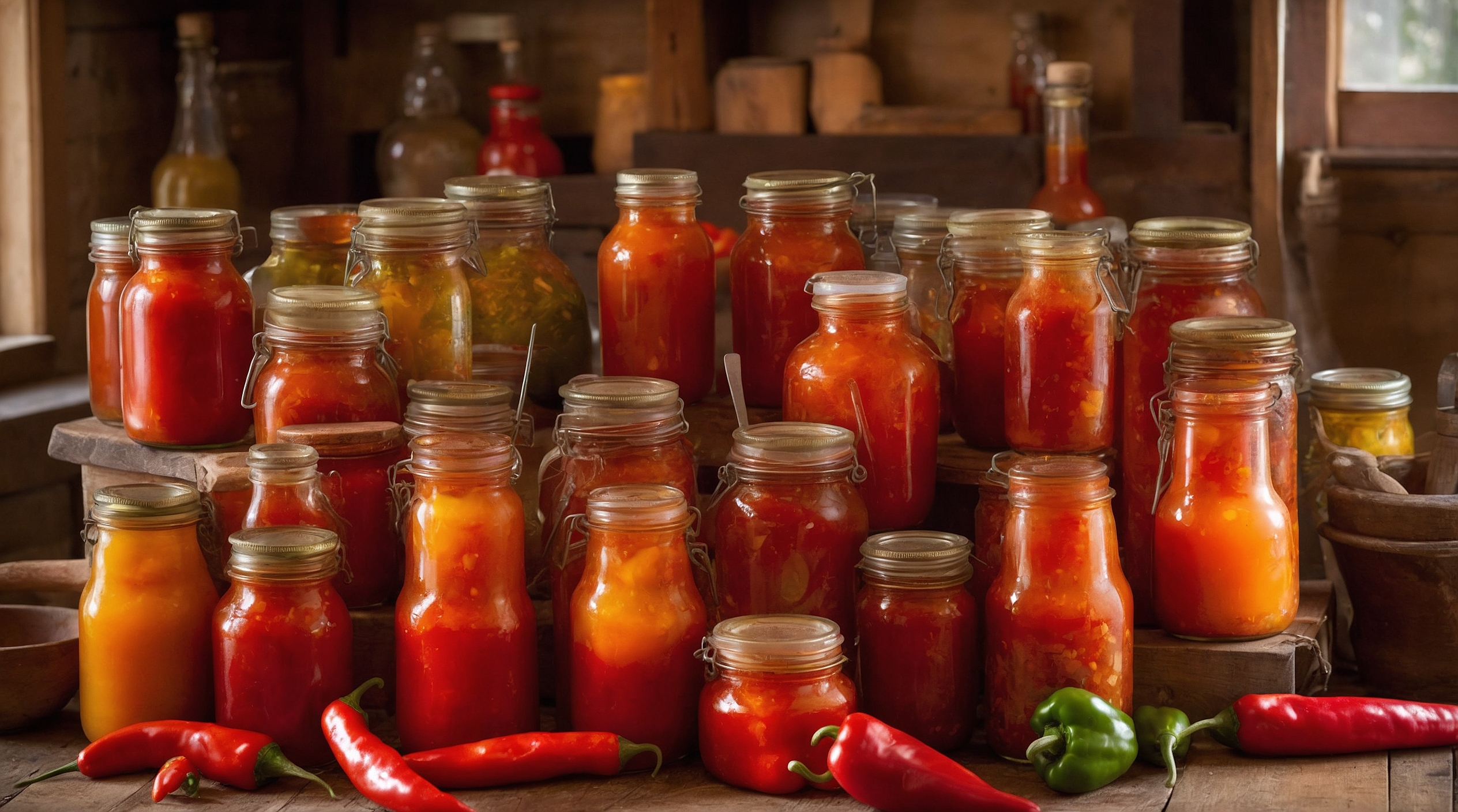What is hot sauce?

You could say that our mission is to get more people to try hot sauce. We are convinced that there is a suitable hot sauce for everyone and every recipe, but before you check our range of hot sauces, it might be useful to first explain what we think hot sauce is. Explained very simply: a sauce made with peppers. That’s the basics. And what is sauce? Sauce is a slightly liquid substance that is poured over or next to a dish to add extra flavor.
In the case of hot sauce, we are not talking about sambal, which is more like puree. We believe that spicy salsas, despite the fact that they literally mean ‘sauces’ in Spanish, do not fall under the hot sauce flag and are therefore not sold as hot sauce in the market. It must be pourable or sprayable (doesn’t sound so sexy, but there is also such a thing as a spray bottle), so you can’t scoop it out of a jar with a spoon. So now we know what it is, but then we can also divide it into two groups. Namely ‘fermented’ and ‘non-fermented’ hot sauces. We will explain this briefly.
Fermented hot sauces
If you are not yet familiar with the phenomenon of fermentation, it is a process in which bacteria, fungi and yeasts are used to make a food product. In this case, spicy sauce. The bacteria, fungi and yeasts convert substances in the sauce, which changes the acidity, taste, smell or appearance. This process is called fermentation.
This sounds quite complex, but if done properly it is not that complicated. Decompensate the peppers (usually a pepper puree) by dipping them in a salty brine and then placing them in an airtight container. This takes at least one week, but sometimes much longer. It adds complexity and depth to the taste of the ingredients, which is often described as ‘funky’. The ‘non-fermented’ hot sauces are more straightforward in terms of what you can expect from the taste of the ingredients with which the sauce is made. There is no ‘funky’ layer around it. Some well-known hot sauces that are fermented are Tabasco and Sriracha.

Non-fermented hot sauces
The above description of ‘non-fermented’ hot sauces may suggest that it is a bit more boring, but we certainly don’t think that is the case. We even have a preference for this variant. The vinegar provides a nice acidity, which we really appreciate in combination with the spice of peppers. The various ingredients in this variant also retain their original taste slightly better. In addition to vinegar and peppers, salt is always added to the mixture and that gives you the basis of ‘non-fermented’ hot sauces: peppers, vinegar and salt.
You can do this in any proportion you want and it is therefore much easier to make. Throw the ingredients into a blender until you get the consistency you want and you’re done. At least, if you make it for your own use and eat it quickly. Almost all hot sauces that are made for commercial use and have a longer shelf life are also heated before they go into the bottle. It’s nice for the end consumer that all bacteria have been killed. Crying a little from hot sauce is fine and the next toilet visit may hurt a little, but you don’t want to get sick from it.
So now you know what hot sauce exactly is and what the basic variants are, but if you want to learn much more about hot sauce and get a lot of inspiration for cooking with it, then we have written the perfect book for you: HOT SAUCE – The hot sauce bible with 40 spicy recipes (only in Dutch). History, culture, fables & facts and recipes. Everything you need in one hot sauce book.
